Key takeaways
- Contact paper is a versatile adhesive material available in various types, including clear, patterned, textured, and chalkboard options, offering numerous creative possibilities for craft projects.
- Essential tools for effectively working with contact paper include a sharp craft knife, self-healing cutting mat, and a durable ruler, ensuring precise cuts and a clean finish.
- Common mistakes to avoid when using contact paper include rushing the application, cutting too precisely without overlap, and using dull tools, all of which can lead to unsatisfactory results.
- Creative uses for contact paper include making stained glass window decals, personalizing notebooks, and utilizing scraps for layering effects, expanding the scope of crafting projects.
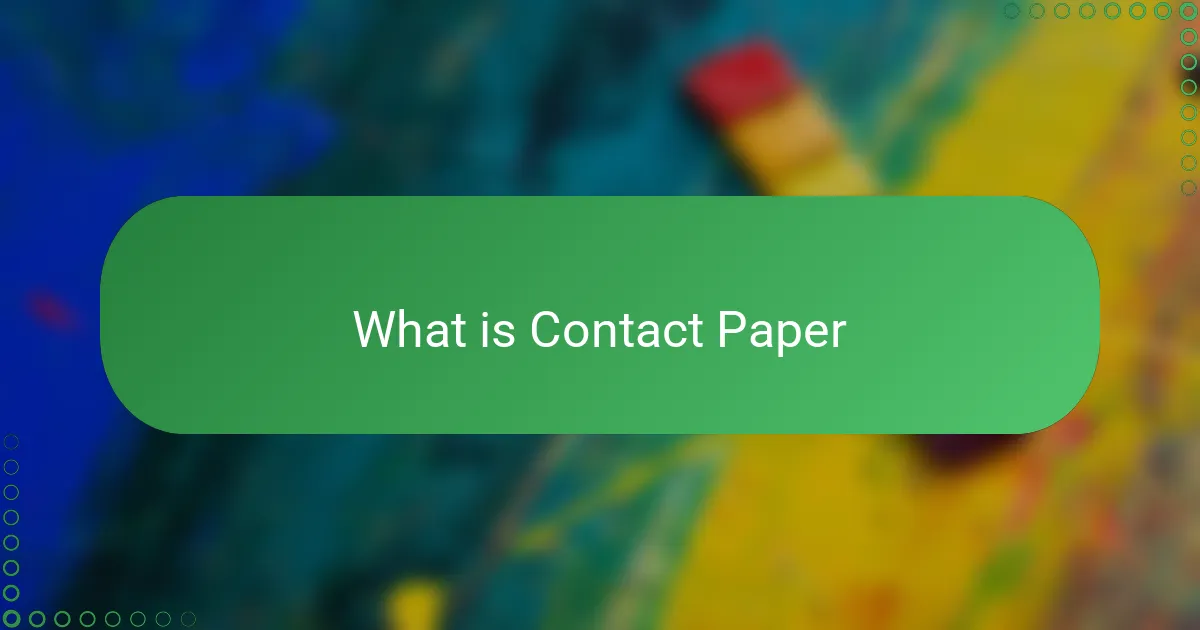
What is Contact Paper
Contact paper is essentially a thin, adhesive material with a protective backing that you peel off before sticking it onto surfaces. I remember the first time I used it—I was surprised by how easy it was to handle and how smoothly it adhered without bubbling. Have you ever struggled finding the perfect simple material that feels like magic when it transforms your project? That’s exactly what contact paper does for me.
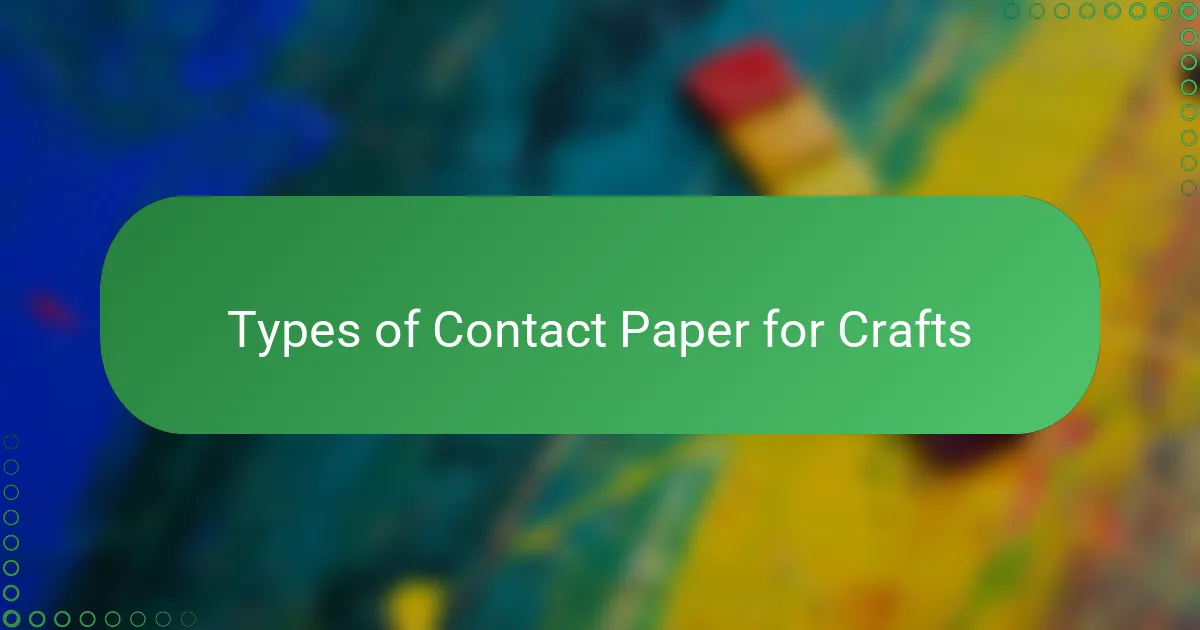
Types of Contact Paper for Crafts
Contact paper comes in a variety of types that can totally change how your craft project looks and feels. I often reach for the classic clear or frosted kinds when I want a subtle touch, but sometimes I crave something bolder—like patterned or metallic contact paper—that instantly adds personality. Have you ever been amazed by how a simple floral or marble design can elevate a plain cardboard box into a stunning gift holder?
There’s also textured contact paper, which I find fascinating because it adds a tactile dimension to my crafts. Using vinyl with a leather or wood grain finish once made a handmade journal cover feel so rich and professional, I almost didn’t want to give it away. When you consider these options, it’s like having a palette of materials, not just a stick-and-peel sheet.
And let’s not forget the chalkboard contact paper, a favorite in my toolkit for adding both function and fun. I’ve made little labels and mini signs that you can write on and wipe off—perfect for craft fairs or organizing supplies. Doesn’t that versatility make you want to try contact paper in so many different ways?
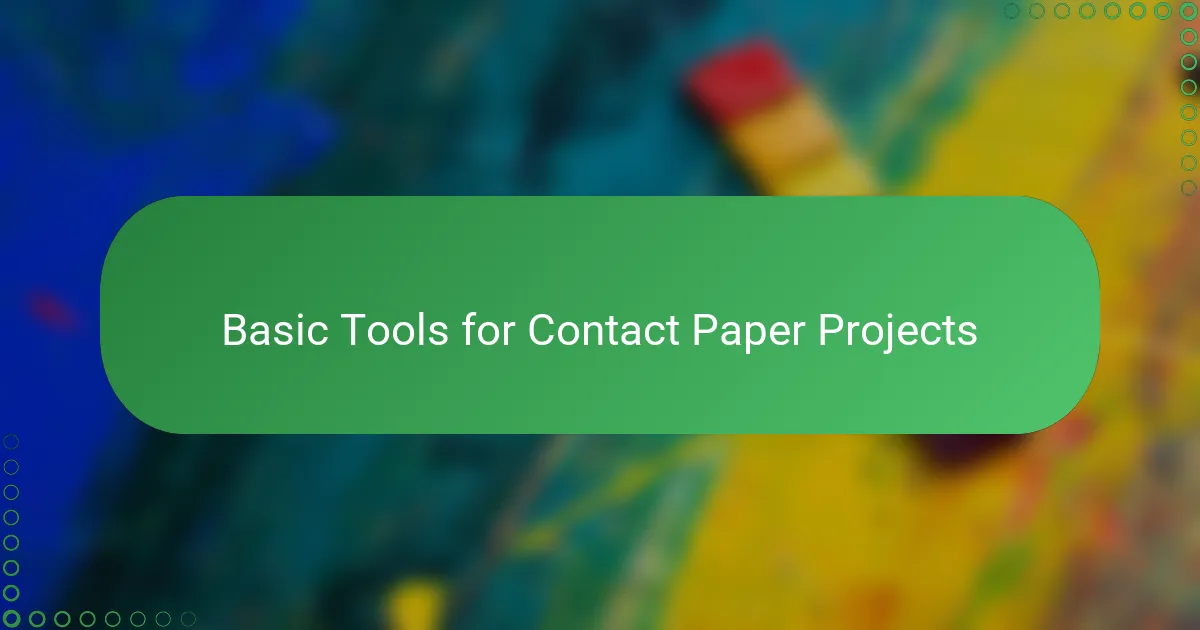
Basic Tools for Contact Paper Projects
When I start a contact paper project, I always make sure to have a sharp craft knife on hand. It’s incredible how precise cuts can make or break the final look, and this tool gives me control that scissors just can’t match. Have you ever tried cutting intricate shapes with dull scissors? It’s frustrating—I sure have, and it reminded me why investing in quality blades pays off.
I also rely heavily on a self-healing cutting mat; it’s like a trusty sidekick protecting my work surface while helping me line up perfect edges. The grid lines on mine have saved me from countless awkward measurements. Plus, knowing the mat won’t get ruined by repeated cuts makes the whole process less nerve-wracking.
Of course, a good ruler is essential, especially one with a non-slip backing. I remember once when my ruler slipped mid-cut, and the result was a crooked edge that set the project back hours. Now, I keep a metal ruler close by for durability and accuracy—it’s a simple tool, but it transforms the whole cutting experience. What tools have saved your craft days?
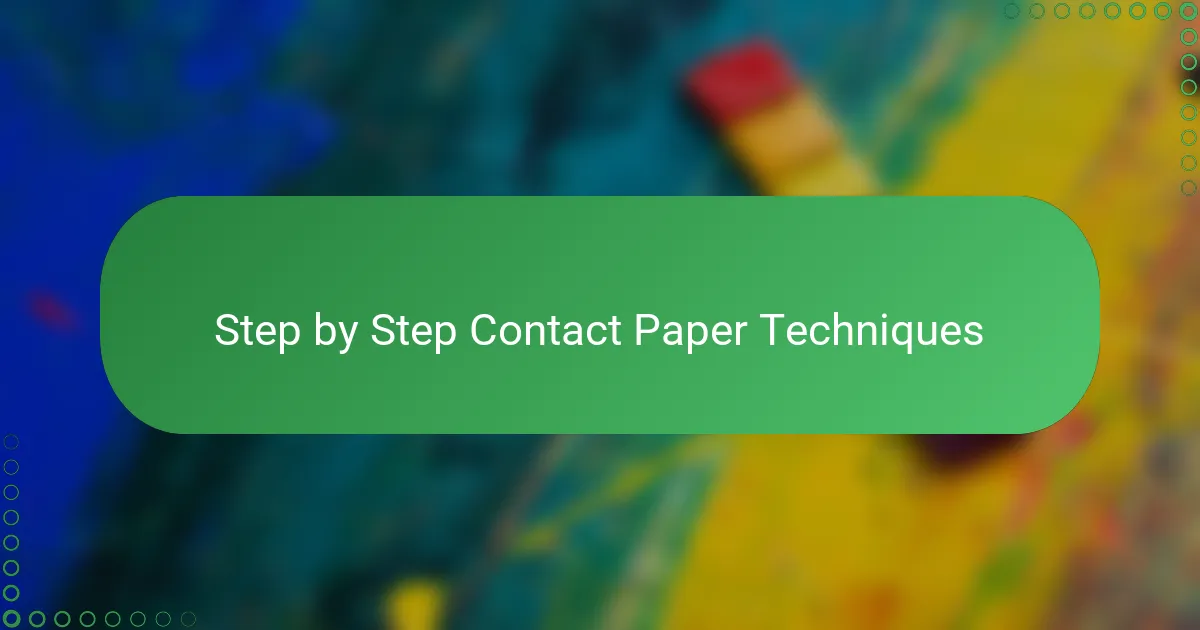
Step by Step Contact Paper Techniques
When I tackle a contact paper project, my first step is always measuring carefully and cutting the paper slightly larger than the area I want to cover. It might sound basic, but trusting this extra margin saved me from peeling back edges that didn’t quite reach the corners. Have you ever struggled with trying to stretch a piece and ending up with wrinkles? Leaving that tiny bit extra makes all the difference.
Next, peeling the backing off slowly is key. I like to start from one corner and pull gently while smoothing down the paper with my hand or a plastic card—like the ones you use at a grocery store—to avoid trapping air bubbles. Sometimes I catch myself rushing this and then spend the next ten minutes smoothing out frustrating wrinkles. Taking it slow? Game changer.
Finally, trimming the edges precisely seals the deal. Using a sharp craft knife and metal ruler here is my go-to combo because scissors often create jagged lines that distract from a clean finish. I remember once rushing this step, and the uneven edges drove me crazy every time I looked at the piece. Have you noticed how those little details elevate the whole project?
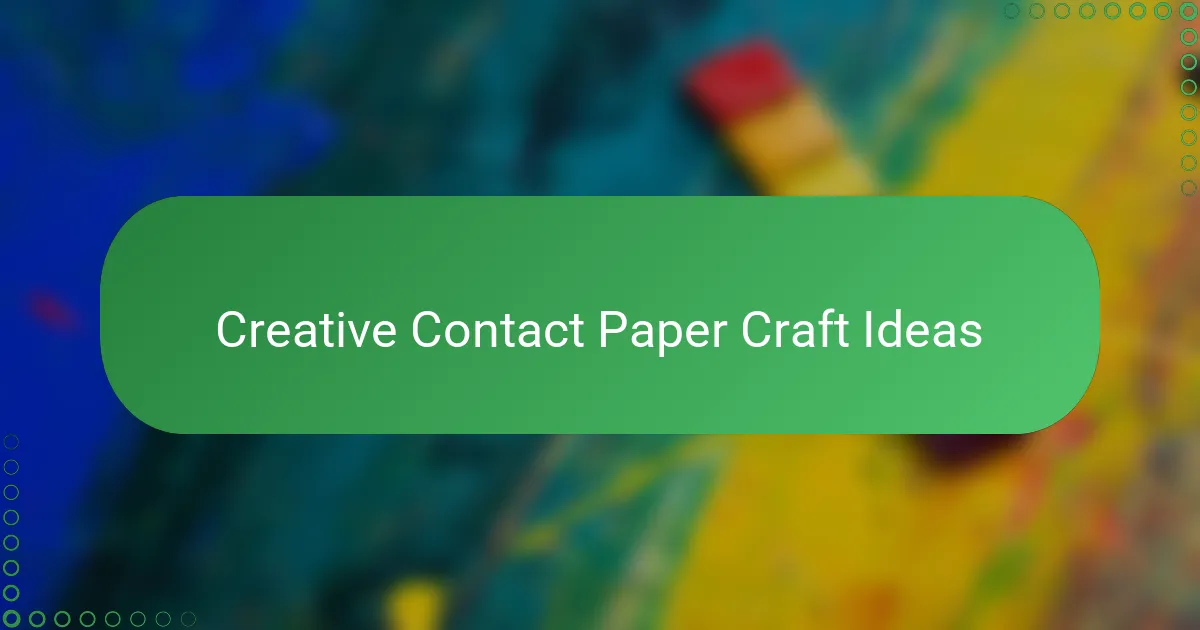
Creative Contact Paper Craft Ideas
When I dive into creative contact paper crafts, one of my favorite go-tos is making stained glass window decals. Cutting vibrant shapes from clear contact paper and layering colored tissue underneath creates this mesmerizing effect that lights up any window. Have you tried letting sunlight dance through your handmade art? It’s like bringing a little magic into the room.
Another idea I love is covering plain notebooks or journals with patterned or textured contact paper. It instantly gives a boring cover personality and even protects it from wear and tear. I once transformed a simple sketchbook into a leather-look masterpiece, and every time I reached for it, I felt a burst of pride. What everyday items could you personalize with just a little adhesive flair?
If you’re into organizing, chalkboard contact paper has been a game changer for me. Labeling jars or making mini signs that you can rewrite endlessly adds both style and function to my craft space. I found myself scribbling reminders and inspirational quotes right where I needed them—doesn’t that make crafting feel just a bit more personal and motivating?
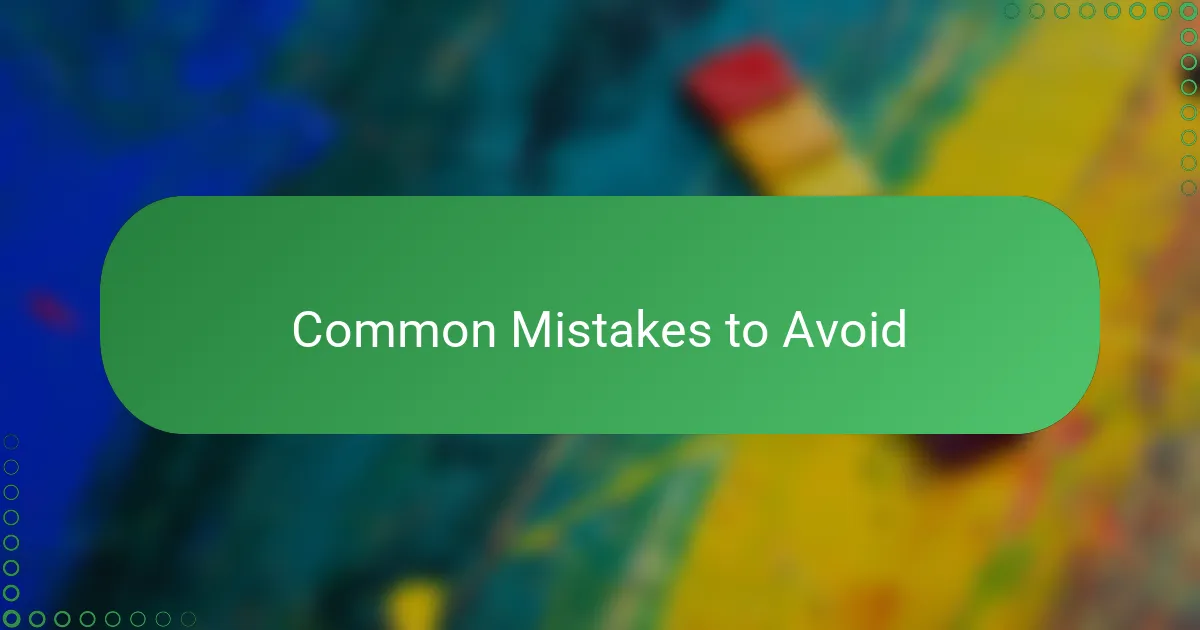
Common Mistakes to Avoid
One mistake that trips up many crafters, myself included at first, is rushing the application of contact paper. I’ve learned the hard way that peeling off the backing too quickly often traps air bubbles that are a real nuisance to smooth out later. Have you ever spent more time fixing bubbles than actually enjoying the crafting process? Waiting patiently really pays off.
Another common slip is cutting contact paper without leaving a tiny overlap. Early on, I tried cutting to the exact size, only to realize the edges started peeling away after a few days. Adding just a little extra margin has saved me from redoing projects and the frustration that comes with it. Isn’t it amazing how small adjustments can mean the difference between a durable finish and a flop?
Finally, using blunt tools is something I’ve seen many overlook. I once struggled with jagged edges from dull scissors and wasted precious material in the process. Switching to a sharp craft knife and a metal ruler transformed how clean and professional my pieces looked. What tools do you rely on to help your crafts shine?

Tips for Unique Contact Paper Uses
One tip I always swear by is mixing textures and patterns within a single project. Using metallic contact paper alongside matte or frosted types creates a stunning contrast that catches the eye—and it’s a fun way to break free from the ordinary. Have you ever noticed how a subtle shimmer can instantly lift a handmade card or journal cover from simple to show-stopping?
Another trick I’ve discovered is repurposing leftover scraps by layering them to create collage effects. Instead of tossing small pieces, I arrange them like puzzle parts to build unique backgrounds or abstract shapes. It’s like giving scraps a second chance to shine, and it keeps my creative process playful and resourceful. Doesn’t that idea make your craft space feel more like an art studio?
Lastly, I can’t stress enough the magic of using contact paper not just as a surface cover but as a stencil itself. Cutting out shapes and patterns from contact paper lets me stencil paint or ink onto other surfaces without fuss. It’s a simple hack that expanded my crafting possibilities way beyond what I expected. Have you tried turning your adhesive sheets into templates yet? If not, I promise it’s worth the experiment.
